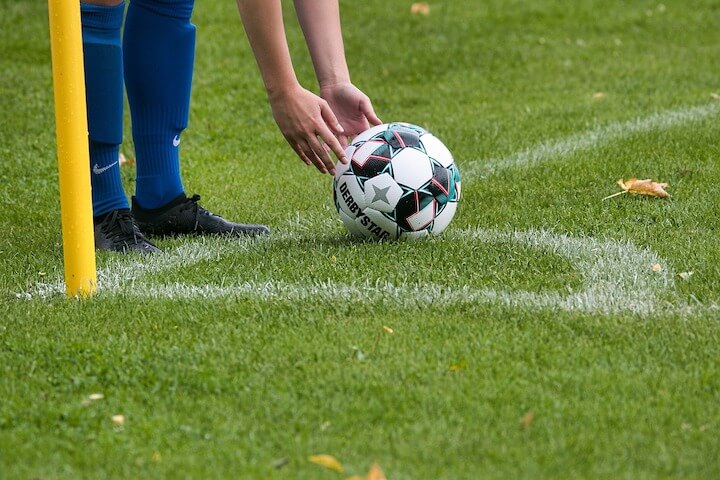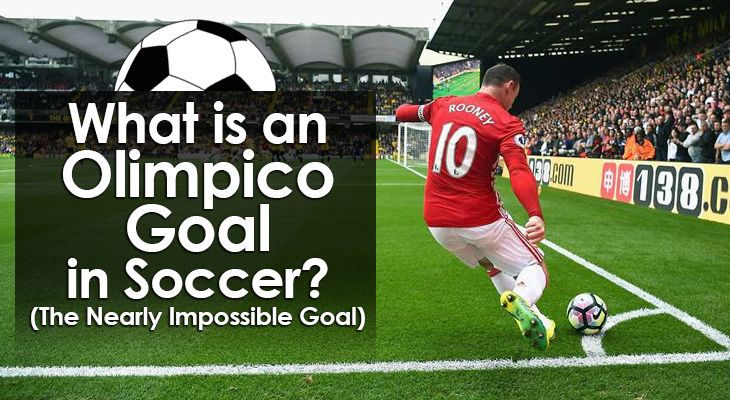What is an Olimpico Goal in Soccer? (Almost Impossible!)
Key moments are what makes soccer games so exciting.
Moments when a player executes an outrageous skill, a defender makes a last ditch goal-line clearance, a playmaker threads a perfect through ball, or an attacker scores a brilliant goal...
...fans of the game absolutely love these plays!
One of these memorable goal-scoring moments is when a player scores an “Olimpico” -- which is one of the rarest types of goals seen in soccer.
When it comes off, it is a pretty special moment.
In this text, we explain what an Olimpico is, where it came from, and how players score one.
What Is An Olimpico Goal?
Chances are, you’ve seen an Olimpico goal before, but you probably didn't know the name.
Perhaps you’re more familiar with the term “corner-kick goal”, which is more widely used in casual conversation.
Simply put, an Olimpico is a goal scored directly from a corner-kick.
Obviously, a corner-kick is a set-piece given to a team when the ball goes over the line on either side of the opponent’s goal, and one of the opponent’s players was the last to touch it.
When the corner-kick somehow avoids the touch of any player - including the goalkeeper - to curve into the net, the goal is then called an “Olimpico.”
There are probably more cases of accidental Olimpico goals than there are deliberate ones -- which makes it all the more special.
The Origin Of The Olimpico
The “Olimpico” is a reference to an Olympic goal that scored back in 1924.
The name was coined after then Olympics-champions, Argentina, were playing a friendly game against Uruguay.
Argentina’s Cesareo Onzari picked the ball up for a corner kick and scored directly from it.
People referred to it as a “gol Olimpico '' in Spanish, which clearly means an “Olympic goal” -- even though it was not scored during an Olympic game.
It wasn't the first time a goal was scored in such fashion, but this particular one gained popularity due to the profile of the teams involved.
At the time, people were questioning the legality of scoring such a goal...
But these questions were quickly dismissed since Olimpicos had been scored before with no issues about rule-breaking.

How To Score An Olimpico
Even with incredible technique, players need A LOT of luck to score an Olimpico attempt.
The following factors will play a part in the success of the effort:
- The technique of the player
- The defense line
- The position of the keeper
- Environmental conditions
1. The Technique of the Player
Since corner-kicks start from the half-circle nearly on the same line as the goal-line, players need to be able to curve the ball.
This requires a good level of technique from the player taking the corner.
Good technique will ensure that the player has a better sense of how much curve will be required in combination with the speed of and power behind the ball.
The right amount of power helps ensure that the ball is not under-hit or over-hit past the target.
The right amount of speed also ensures that the ball is quick enough to give the defense little time to react/recover for clearance before it hits the net.
2. The Defense Line
Teams have various ways of setting up to defend from corners.
The way the defense sets up can affect the success of an Olimpico attempt.
If the defense has two players - one on either side of the keeper, ready to make clearances on the goal line, it becomes more difficult to get the ball past them.
However, if the team is deploying zonal marking that involves every defensive player camping in the 18-yard box, then the fact that there is only one obstruction (the goalkeeper) on the goal line increases the chances of success.
3. The Position of the Keeper
Goalkeepers can get distracted when trying to arrange their defense to defend a corner kick.
In some situations, the goalkeeper will be seen still shouting instructions when the whistle goes for the corner to be played, and before there is time to recover, the ball is whistling into the net.
In other situations, the goalkeeper is caught off their line, and it becomes a similar situation to trying to lob the keeper in a normal, open play situation.
If the keeper is off the goal line, there is space behind that the player taking the corner kick can exploit to curve the ball into.
Being off the line makes it harder for the keeper to track backward and try to make a save.
4. Environmental Conditions
This is where luck comes in.
Even if you manage to hit the ball with good technique, a little help from windy conditions might be the final piece that bamboozles the defense and gets the ball into the net.
In windier conditions, it's easier to get more curve on the ball, although this can also lead to balls with too much curve.
Conclusion
We don’t see them often, and it’s pretty clear why, looking at the execution of the Olimpico.
It's simply outrageous to try, even though the results when it does come off are worth it.
If you’re going to attempt an Olimpico in a real game, make sure nothing important is at stake!

